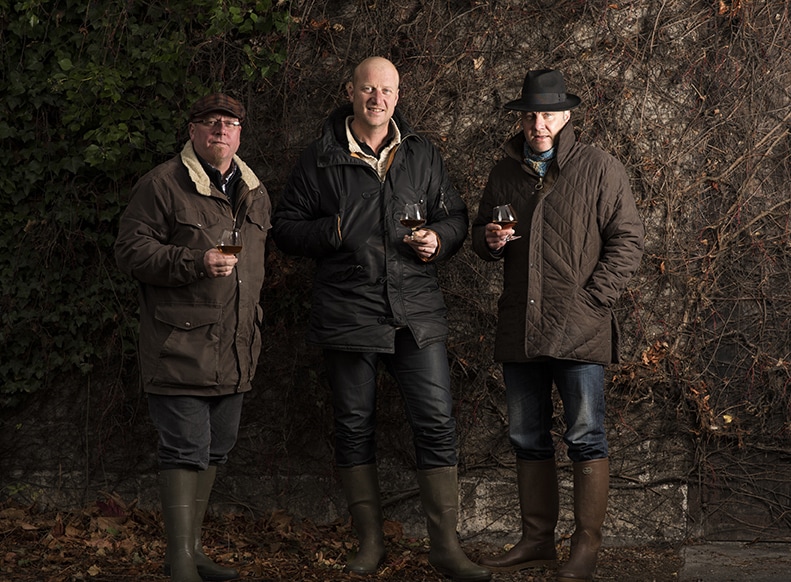Calvados Adrien Camut
Since the 1800s, the Camut family has grown apple trees in the Pays d’Auge, the finest growing region for Calvados. In Normandy, 800 types of apples are grown; the Camut family grow about 25 of these, favoring historic varieties endemic to the region that produce richer, less volatile spirits than are commonly found in the region. The apples are hand-harvested at optimum maturity between October and mid-December on the 45-hectare estate, which is planted with hautes-tiges orchards (tall trees from standard rootstock planted wide apart) that are fertilized and aerated by Limousin cows. While pears are allowed in Calvados production in the Pays d’Auge, only apples grown on the Camut property are used in Camut Calvados, and nothing is reserved for cider production.
After crushing and pressing, the juice undergoes long fermentation, resting in oak barrels for 10–11 months. In September, the cider is double-distilled on the property’s two, wood-fueled copper pot stills (one of which is 75 years old) and proofed with rainwater. Large vats and tonneaux are filled no higher than 75% to speed evaporation and remove volatile components from the young brandy. No new barrels are used; most originated in Limousin and are an average 50 years of age. During its first few years of aging, Camut Calvados is frequently transferred between vessels to promote oxidation. Even older brandy is exposed to air at least once a year to allow for a constant exchange of oxygen, gradual reduction, and concentration of the brandy; more brandy is lost to evaporation than this coveted estate bottles each year. The blends are as natural as possible; time alone has mellowed these rich, lush spirits.




